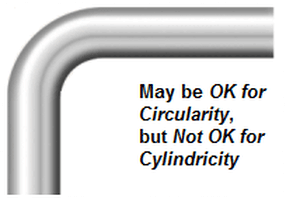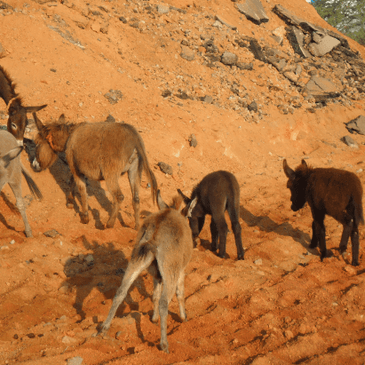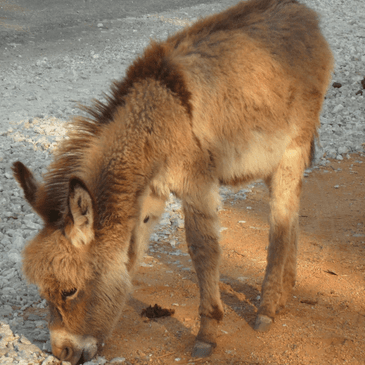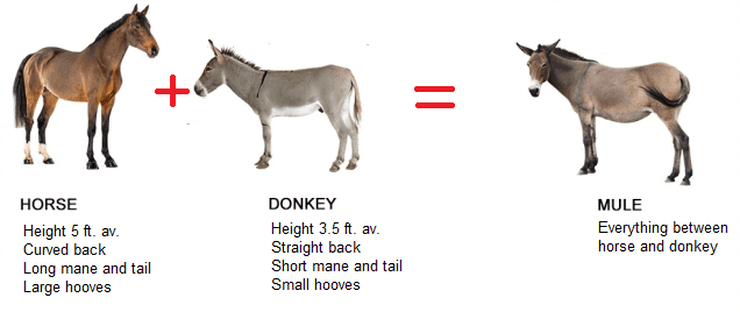CNC: Circularity and Cylindricity – the difference
Circularity: Every circular cross section of the part must lie between two concentric circles spaced the ‘circularity’ distance apart. In this example, the circularity is 0.25 mm. All cross sections (like A-A and B-B in the figure) must lie within two circles 0.25 mm apart. Circularity is 2-dimensional. You are only checking to see if the cross sections are OK, not whether their centres lie on a straight line.

Cylindricity: Every circular cross section of the cylinder must lie between two concentric cylindersspaced the ‘cylindricity’ distance apart. In this example, the cylindricity is 0.03 mm. All cross sections (like A-A and B-B in the figure) must lie within these two cylinders 0.03 mm apart. Cylindricity is 3-dimensional. You are checking to see if the cross sections are ok AND that they lie on a straight line.

The rod in the picture below might be OK for circularity, but will not be OK for cylindricity.

Circularity can also apply to spheres and cones, while cylindricity applies only to cylinders.
This post was prompted by a suggestion of Mr. K. Vijayakumar in my last post.
Text and pics. source: CADEM NCyclopedia multimedia CNC training software.
Etc.
Donkey or Mule ? My perennial confusion
I saw these animals on an under-repair highway recently, driving to North Karnataka for a short holiday. I wondered whether they were donkeys or mules. I’m always confused about this, and did some reading on the internet after I got home. Turns out they were donkeys.



The mule is the offspring of a female horse and a male donkey, kind of mid-way between a horse and donkey physically. It is sterile, and cannot produce any offspring. The horse and donkey belong to two different species, and the mule is a hybrid that does not belong to a species of its own – even its scientific name indicates that it is a hybrid (I also just learnt that the x sign in a hybrid name indicates the link between the parents – never knew that a bunch of donkeys could teach me so much).
Donkey: Equus africanus asinus
Horse: Equus caballus
Mule: Equus asinus × Equus caballus


Mules work alongside soldiers in high altitude areas on India’s borders, and are used to transport stores, heavy artillery and ammunition where no vehicle can go. An army mule can carry 50-60 kg upto a distance of 25 km. Mules are sure footed (hence can walk along narrow mountain tracks), intelligent, have a good memory for routes.
Charles Darwin expressed his admiration for the mule beautifully: “The mule always appears to me a most surprising animal. That a hybrid should possess more reason, memory, obstinacy, social affection, powers of muscular endurance, and length of life, than either of its parents, seems to indicate that art has here outdone nature.”
